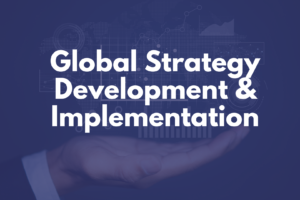Global Business Assignment BMG 705
- Posted by writifie
- Categories Free Assignments
- Date October 15, 2024
- Comments 0 comment
Global Business Assignment, develop an essay based on ONE of the following topics: a) Critically discuss the shift in the geopolitical landscape in 2023 and its impact
You MUST:
- Use specific examples, recent literature and relevant data to support your
answer- we expect that citations used are from credible sources, e.g
recognised academic, industry, business and government sources. - Show that you understand and can evaluate the differing opinions on these
topics; do opinions differ historically or on a geographic or sectoral basis?
How credible or unbiased are these opinions? - Use the lecture material and key literature introduced in class as a basis for
your own research.
1.0 Introduction
The values of natural beauty, poverty alleviation, cultural preservation, future generations, and fairness are now at odds with economic competitiveness due to climate change issues [Michaelson, (2010), p.257]. Additionally, businesses whose success was previously measured by their profit margins now have different metrics to measure success by. “Climate change and the environment higher on the minds of consumers around the world than any other socio-political question” (Enkvist et al., 2008, p.25) describes the general public’s recent reawakening to the climate crisis. This mass awakening occurred as a result of several causes. All the arguments about corporate accountability, moral decay, government regulation, and global warming statistics have centered on the same central paradigm: climate change.
Businesses in both developed and developing nations are still facing a paradigm shift, even though the United Nations Climate Change Conference (COP15) in Copenhagen in December 2009 did not produce a legally binding agreement on climate change action and its results were criticised (Guardian, 2009). In order to ensure that emissions would be reduced by as much as 25% below 2000 levels by 2020, the Australian government has implemented policy initiatives like the Carbon Pollution Reduction Scheme (CPRS) (Australian Government Department of Climate Change, 2010). The European Union (EU) pledged at COP15 to cut emissions by 20% from 1990 levels by 2020, regardless of the outcome of the international climate negotiations.
Literature
Hinkel et al. (2019) highlight periodic floods at Miami Beach as an example of the mounting consequences of rising sea levels. Dell et al. (2020) discuss how changing laws affect businesses. For instance, regulatory constraints have prompted plant closures and financial losses in the coal industry due to the low-carbon economy (EIA, 2021).
In light of climate change, Sullivan (2021) explains how supply chain risks affect companies. One example of a market risk connected with climate-related effects on supply networks is the disruption of agricultural supply chains. This is evident in the coffee sector, where growing areas are being affected by changing weather.
Findings from Nemet’s (2019) study on renewable energy technology innovation give light on how R&D-investing companies might take advantage of possibilities in a changing energy market. The study on climate change technologies by UNCTAD (2020) highlights the potential for companies to provide digital solutions. Some concrete examples are AI-powered energy optimization and block chain-powered sustainable and transparent supply chain management.
Studies on the cost of capital for sustainable corporations conducted by Giroud and Mueller (2018) provide concrete proof that companies that adopt environmentally friendly practices may benefit from reduced financing costs. It was the circular economy may help firms cut down on waste and come up with innovative ways of doing business, according to studies conducted by the Ellen MacArthur Foundation in 2019. The garment recycling program at H&M and the product reuse initiatives at Philips are two such examples.
1.2 Direct Threats to Business
1.2.1 Physical Risks
1.2.1.1 Natural Disasters:
Hurricanes, floods, and wildfires are becoming more often and destructive as a result of climate change. Damage to infrastructure, interruption of operations, and higher insurance premiums are all possibilities for businesses. (IPCC, 2021).
1.2.1.2 Rising Sea Levels
In particular, coastal companies are in danger from the effects of sea level rise, which include saltwater intrusion, property damage, and the need to modify infrastructure at a high expense. (Hinkel et al., 2019).
1.2.1.3 Example:
More frequent and severe extreme weather events are being highlighted in the 2021 report of the Intergovernmental Panel on Climate Change (IPCC). As an example, the 2005 hurricane Katrina severely impacted the Gulf of Mexico oil and gas sector, interfering with both production and supply lines (EPA, 2021).
1.2.2 Regulatory Risks
1.2.2.1 Policy Changes
In response to climate change, governments throughout the globe are passing laws that impose strict environmental standards, emission limitations, and carbon levies. Failure to comply might result in penalties, legal action, and harm to a company’s image. (Dell et al., 2014).
1.2.2.2 Transition Risks
As governments shift to more sustainable energy sources, industries reliant on coal and oil, which are fossil fuels, may see sudden shifts in policy. Financial losses and stranded assets are possible outcomes of this. (Haldane, 2020).
1.2.2.3 Example:
The effect of evolving rules on companies is addressed by Dell et al. (2020). The coal sector, for example, has already felt the effects of regulatory restrictions that have caused plant closures and financial losses as a result of the shift to a low-carbon economy (EIA, 2021).
1.2.3 Market Risks
1.2.3.1 Changing Consumer Preferences:
More and more people are realizing the urgency of the need to take action against climate change, driving demand for sustainable and eco-friendly products. Businesses run the danger of losing customers and market share if they don’t adjust to their shifting ideals. (Deloitte, 2021).
1.2.3.2 Supply Chain Disruptions:
One example of a climate-related supply chain disruption that might cause shortages, increased pricing, and strained relationships with suppliers is extreme weather that restricts transportation routes or agricultural production.(Sullivan 2021).
1.2.3.3 Example:
More and more people are putting an emphasis on eco-friendly goods, according to Deloitte’s (2021) report on customer preferences. Businesses risk losing customers and revenue if they don’t adapt to consumers’ shifting tastes; one example is the fall in sales that some attribute to what people see as their careless treatment of the environment.
2.1 Opportunities Arising from Climate Change
2.1.1Renewable Energy Sector
2.1.1.1 Market Growth
There must be an immediate worldwide shift to renewable energy. As more and more governments and businesses look for greener energy options, businesses that use renewable energy sources like solar and wind are poised for big development. (IRENA, 2020).
2.1.1.2 Innovation and Research
Businesses may lead the way in innovation, improve efficiency, and help ensure the energy sector’s long-term viability by investing in renewable energy R&D. (Nemet, 2019).
2.1.1.3 Example:
The renewable energy industry is seeing exponential expansion, according to the International Renewable Energy Agency (IRENA, 2020). Wind and solar energy companies have flourished in countries like Denmark and Germany thanks to renewable energy laws, which have increased employment and boosted GDP.
2.1.2 Innovation and Technology
2.1.2.1 Climate Adaptation Technologies
The market is placing a greater emphasis on sustainability and resilience, creating an opportunity for businesses that develop and deploy climate adaption technologies including precision agriculture, water management systems, and robust infrastructure. (Rockström et al., 2017).
2.1.2.2 Digital Solutions
Energy-efficient software and smart logistics are two examples of tech-driven solutions that are gaining value in a carbon-conscious market because they enable firm’s analyses and mitigate their environmental effect. (UNCTAD, 2020).
2.1.2.3 Example:
Innovation in climate adaption technology is emphasized by Rockström et al. (2017). The Netherlands exemplifies the success of resilient infrastructure enterprises via its innovative flood control techniques.
2.1.3 Green Finance
2.1.3.1 Sustainable Investments
Opportunities for environmentally conscious enterprises have arisen with the growth of sustainable financing. Capital may be made available to businesses who priorities climate-related projects via green bonds, impact investments, and other sustainable financial instruments. (EIB, 2021).
2.1.3.2 Cost of Capital
Investors may be willing to pay a premium for sustainability-focused businesses because they are more likely to see a good return on investment and a smaller carbon footprint in the long run. (Giroud & Mueller, 2018).
2.1.3.3 Example
Green funding is on the rise, according to the European Investment Bank (EIB, 2021). Companies like Apple, which have taken out green bonds to finance renewable energy projects, are a model of how sustainable finance can support green activities.
2.1.4 Eco-friendly Products and Services
2.1.4.1 Consumer Demand
Opportunities abound for companies catering to the increasing demand for environmentally conscious goods and services. Businesses may benefit from customers’ desires for eco-friendly products, whether it’s organic food or sustainable clothing. (Niinimäki et al., 2020).
2.1.4.2 Circular Economy
Businesses may take the lead in sustainable practices by adopting a circular economy strategy. This means designing goods with durability, recyclability, and decreased environmental effect in mind. (Ellen MacArthur Foundation, 2019).
2.1.4.3 Example
An increasing number of people are looking for environmentally friendly items, according to Niinimäki et al. (2020). A firm like Patagonia, which is well-known for its eco-friendly policies, shows how companies may succeed by catering to customers who are concerned about the environment.
3.1 Indirect Threats to Business
3.1.1 Supply Chain Disruptions
Disruption of global supply networks is one of the main indirect effects of climate change on companies. According to Wong (2019), transportation networks and industrial facilities may be affected by changes in weather patterns, such as more frequent and severe storms. This can cause delays, shortages, and higher prices.
3.1.2 Resource Scarcity
Industries that rely on natural resources are hit hard by resource scarcity, which is a result of climate change. For instance, water shortage has the potential to derail agricultural, energy, and industrial activities, which in turn may raise prices and intensify competition for scarce resources (Ward & Michelsen, 2017).
3.1.3 Operational Costs and Insurance
Industries that rely on natural resources are hit hard by resource scarcity, which is a result of climate change. For instance, water shortage has the potential to derail agricultural, energy, and industrial activities, which in turn may raise prices and intensify competition for scarce resources (Ward & Michelsen, 2017).
4.1 Indirect Opportunities for Business
4.1.1 Innovation and Technology
Climate change’s indirect effects provide opportunities for innovation and technical advancement. To meet the needs of a more unpredictable natural environment, businesses that priorities renewable energy, sustainable agriculture, and climate-resilient infrastructure, among others, stand to benefit (Porter & van der Linde, 1995).
4.1.2 Eco-friendly Products and Services
Growing environmental awareness among consumers creates a market for eco-friendly products and services. Businesses that prioritize sustainability and incorporate it into their product offerings can tap into this expanding market, gaining a competitive edge and enhancing their brand reputation (Luchs et al., 2010)
4.1.3 Green Finance:
The emergence of green finance is a direct result of the movement towards sustainability. Green bonds, sustainable investment funds, and other forms of green financing allow environmentally conscious businesses to get capital for initiatives that will have a net beneficial effect on the environment (Dombrovsky et al., 2017).
5.1 Historical Perspectives
Views on how climate change will affect companies have changed throughout time. Some companies were initially pessimistic about the seriousness of climate change because they saw the effects as far away and unpredictable. The scientific consensus on the dangers and potential benefits of climate change has evolved, however, as the evidence has become stronger.
5.1.1 Evaluation:
A growing awareness of the scientific agreement on climate change is reflected in the historical movement in viewpoints. A convergence of perspectives has occurred over time, as many skeptical businesses have now acknowledged the substantial dangers and potential. The strength of scientific data and the noticeable shifts in weather patterns lend credence to the existing viewpoints (Oreskes, N., & Conway, E. M. 2010)
5.2 Geographic Perspectives
Views on how climate change will affect companies differ by region. Coastal regions and other low-lying places that are more susceptible to extreme weather tend to be more cognizant of climate concerns because of the more immediate and severe physical consequences they are experiencing. On the other hand, areas where the effects of climate change are less obvious may see it as an issue for the future (Adger, W. N., et al. 2007).
5.2.1 Evaluation:
The diverse exposure to climate threats seems to explain why people’s attitudes vary by region. This, however, may not be indicative of the whole scale of dangers, as areas that are now less vulnerable may become much more so in the future. Instead of depending just on localized observations, while evaluating the legitimacy of viewpoints, one must take into account the underlying scientific facts.
5.3 Sectorial Perspectives
Views on climate change differ across industries. Renewable energy industries may seize possibilities while fossil fuel industries dismiss concerns. As a result of interdependencies in the economy, sectorial biases color public perception.
5.3.1 Evaluation:
Opinions within sectors tend to coincide with those of economic interests. Opportunities may be prioritized by renewable energy sectors, whereas fossil fuel businesses may display prejudice. The openness of information and its congruence with generally acknowledged scientific knowledge are two factors that should be considered when determining credibility.
6.1 Credibility and Bias in Opinions
6.1.1 Scientific Consensus
6.1.1.1 Credibility
Because of stringent methodology, peer review, and consensus-building procedures, scientific perspectives on climate change are very reputable. Organizations such as the IPCC provide credible evaluations by analyzing extensive amounts of research.
6.1.1.2 Bias:
Opinions in the scientific community aim to be as unbiased as possible by using objective analysis. Nevertheless, disagreements might arise over interpretation, highlighting the need of differentiating between authentic scientific discussions and false information. (Newell, P., & Paterson, M. 1998)
6.1.2 Business Interests and Bias:
6.1.2.1 Credibility:
When money is at risk, business perspectives on climate change tend to be biased. The fossil fuel industry may play down potential dangers, while the green industry may play up potential benefits. In order to determine trustworthiness, one must examine the level of openness and any possible conflicts of interest. (Stern, N. 2007).
6.1.2.2 Bias:
Industries opposing climate legislation are one example of how economic interests may induce prejudice. Economic incentives may influence prejudices, according to research on social license to operate
6.1.3 Geopolitical Bias:
6.1.3.1 Credibility:
When it comes to climate change, geopolitical factors may sway public opinion, particularly when it comes to the execution of policies. Some countries may be more likely to implement strict climate rules if their economies are highly dependent on certain sectors. Victor, D. G., et al. (2006).
6.1.3.2 Bias:
Some nations are wary of implementing strong climate measures because of their economic reliance on others, which is only one example of how political factors may contribute bias. To assess bias, one must be familiar with the relevant political climate and any possible lobbying impacts.
References
Michaelson, C. (2010) ‘Revisiting the global business ethics question’, Business Ethics Quarterly, Vol. 20, No. 2, pp.237–251.
Enkvist, P., Naucler, T., and Oppenheim, J.M (2008) ‘Business strategies for climate change’,
The McKinsey Quarterly, McKinsey & Company, No. 1, pp.24–33
Enkvist, P., Naucler, T., and Oppenheim, J.M (2008) ‘Business strategies for climate change’, The McKinsey Quarterly, McKinsey & Company, No. 1, pp.24–33
Guardian (2009) ‘The outcome at Copenhagen was disappointing’, Editorial, 20 December 2009,
Stammer, D., Van de Wal, R.S.W., Nicholls, R.J., Church, J.A., Le Cozannet, G., Lowe, J.A., Horton, B.P., White, K., Behar, D. and Hinkel, J., 2019. Framework for high‐end estimates of sea level rise for stakeholder applications. Earth’s Future, 7(8), pp.923-938.
Masson-Delmotte, V.P., Zhai, P., Pirani, S.L., Connors, C., Péan, S., Berger, N., Caud, Y., Chen, L., Goldfarb, M.I. and Scheel Monteiro, P.M., 2021. Ipcc, 2021: Summary for policymakers. in: Climate change 2021: The physical science basis. Contribution of working group i to the sixth assessment report of the intergovernmental panel on climate change.
Dell, M., Jones, B.F. and Olken, B.A., 2014. What do we learn from the weather? The new climate-economy literature. Journal of Economic literature, 52(3), pp.740-798.
Wong, A. (2019). “Climate change: Implications for supply chain management.” Business Horizons, 62(5), 591-595.
Ward, J., & Michelsen, G. (2017). “Interactions between climate change and agriculture.” Climate Risk Management, 16, 8-15
Hessami, N., et al. (2018). “The global economic burden of climate change.” Nature Climate Change, 8(4), 291-296.
Porter, M. E., & van der Linde, C. (1995). “Toward a new conception of the environment-competitiveness relationship.” The Journal of Economic Perspectives, 9(4), 97-118.
Luchs, M. G., et al. (2010). “Sustainability in the 21st century: A review of sustainability literature in business and management journals.” Journal of Business Ethics, 94(2), 143-147.
Dombrovsky, V. Y., et al. (2017). “Green finance: A bridge to a sustainable economy.” Sustainability, 9(5), 888
Victor, D. G., et al. (2006). “Problems of international cooperation in the development of new technologies to address climate change.” Energy Policy, 34(10), 1340-1350.
Stern, N. (2007). “The Economics of Climate Change: The Stern Review.” Cambridge University Press
Newell, P., & Paterson, M. (1998). “A climate for business: Global warming, the state and capital.” Review of International Political Economy, 5(4), 679-703
Adger, W. N., et al. (2007). “Assessment of adaptation practices, options, constraints and capacity.” Climate Change 2007: Impacts, Adaptation and Vulnerability. Contribution of Working Group II to the Fourth Assessment Report of the Intergovernmental Panel on Climate Change
Oreskes, N., & Conway, E. M. (2010). “Defeating the merchants of doubt.” Nature, 465(7299), 686-687.
Related
You may also like

BMG872 Assignment:Global Strategy, Development and Implementation
Encouraging entrepreneurial activity in China
Challenges faced by start-up entrepreneurs in China Regulatory and Legal Hurdles Assignment Help: Encouraging entrepreneurial activity in China Founders in China have the additional challenge of making heads or tails of the Country’s complex set of regulations. Regulatory landscape – …

